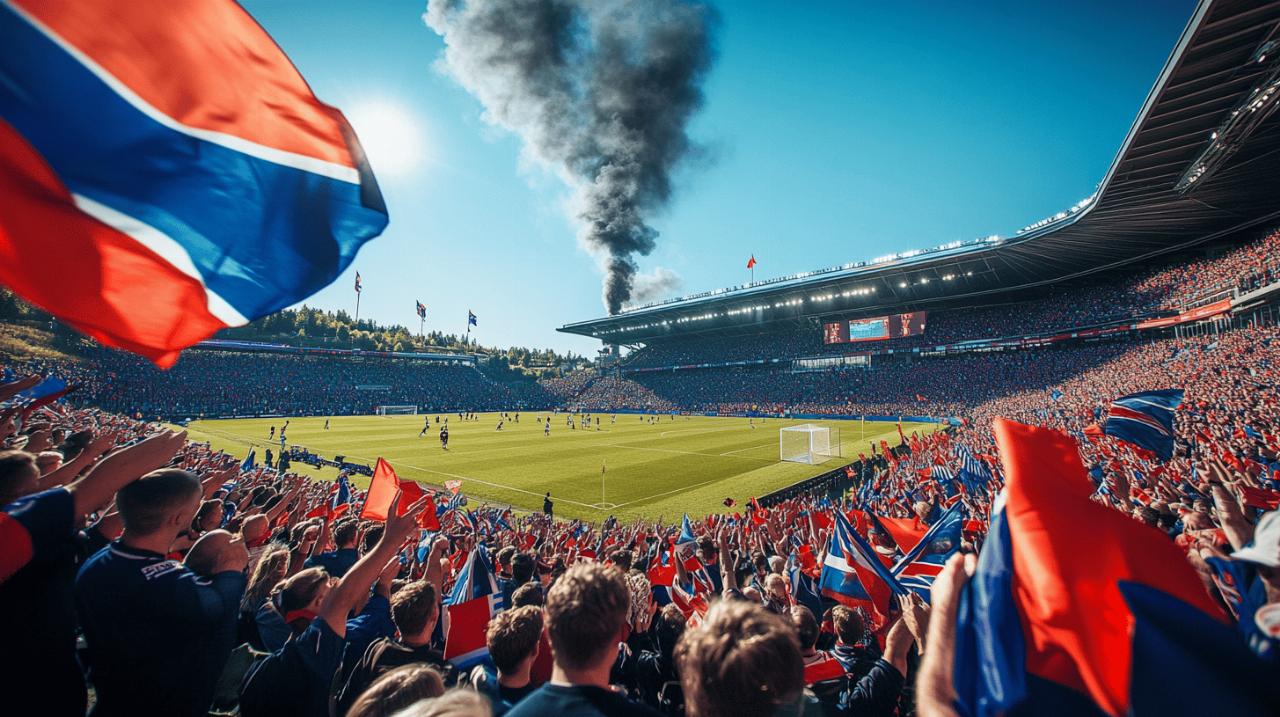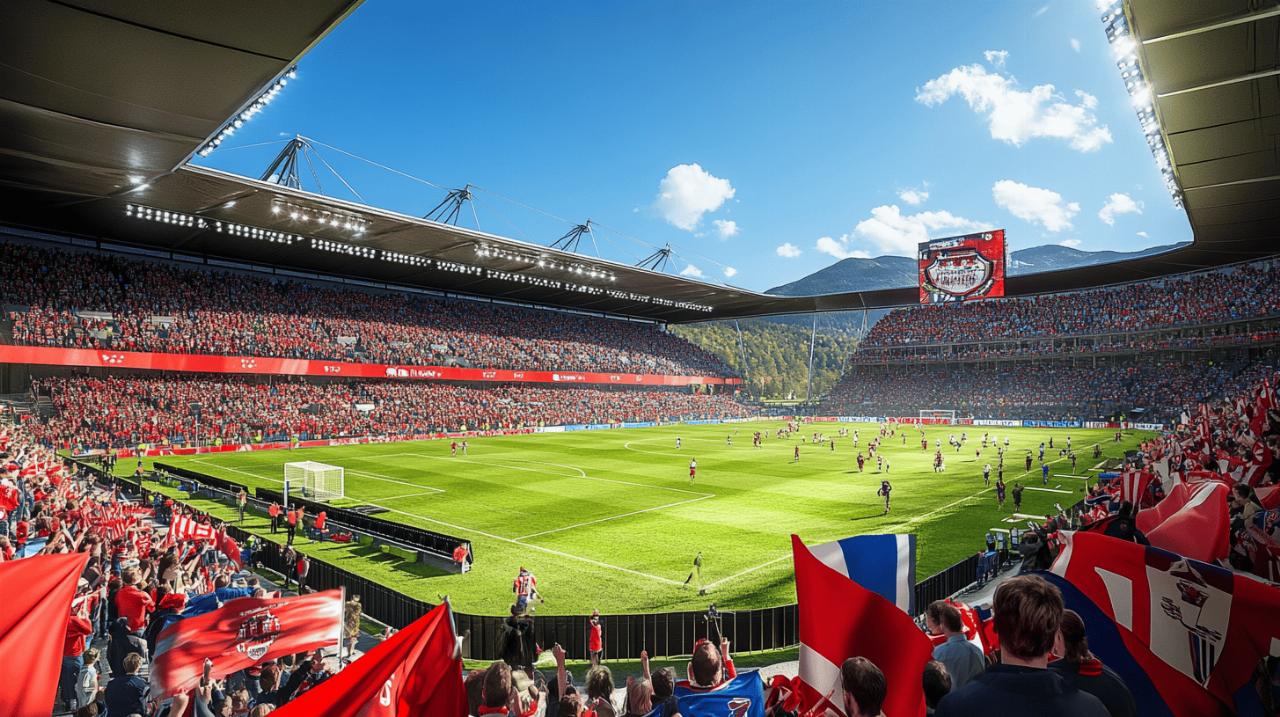Eliteserien norvegien: la Premier League norvegienne – How It’s Reshaping Norwegian Youth Culture

Norwegian football's top division, Eliteserien, stands as a testament to the nation's evolving football culture, blending rich traditions with modern innovations in the sport. From its humble beginnings to its current status, this league shapes the future of Norwegian football while nurturing exceptional talent.
The rise of norwegian football excellence
The Eliteserien has transformed into a vibrant platform showcasing Norwegian football talent, with sixteen teams competing across thirty matches each season. The league's unique summer schedule, running from April to November, sets it apart from other European competitions.
Modern evolution of eliteserien
The league's remarkable progression reflects in its youth-centric approach, maintaining an average player age of 25.1 years. This focus on young talent has led to the emergence of stars like Oscar Bobb at Manchester City and Antonio Nusa at RB Leipzig, while Bodø/Glimt's recent dominance with three titles in four years signals a shift from Rosenborg's historic reign.
Major changes since league formation
Since its establishment in 1937 as Norgesserien, the league has undergone significant transformations. From Hovedserien in 1948 to its current identity as Eliteserien in 2017, the competition has evolved while maintaining its core structure. The league now generates substantial revenue through domestic television rights and serves as a gateway to prestigious UEFA competitions.
Inside the competitive structure
The Eliteserien stands as Norway's premier football division, featuring 16 elite clubs competing across a unique seasonal schedule. This distinctive competition runs from April to November, adapting to the Nordic climate while fostering intensive domestic battles.
Season format and championship race
Each team engages in 30 matches throughout the season in a home-and-away format. The competition awards three points for victories and one for draws, creating dynamic table movements. Bodø/Glimt's recent dominance showcases the league's evolution, securing three titles in four years, including their record-breaking 81-point season in 2020. This marks a shift from Rosenborg's historic reign of 26 championships, demonstrating the league's growing competitiveness.
Relegation battles and promotion system
The relegation structure maintains high stakes throughout the season, with the bottom two teams facing direct relegation to the OBOS-ligaen. A third team enters a playoff battle, adding extra drama to the season's final stages. This system ensures constant renewal of talent, with promoted teams bringing fresh energy to the top flight. The league's commitment to youth development shows in its average player age of 25.1, ranking among Europe's youngest competitions, while maintaining a strong domestic presence with only 28.9% foreign players.
Youth development success stories
The Eliteserien stands as a testament to Norway's remarkable ability to nurture football talent. With an average player age of 25.1, ranking 18th lowest in Europe, the league demonstrates its commitment to fostering young athletes. The domestic focus remains strong, with foreign players comprising only 28.9% of the league, the 12th lowest percentage among European competitions.
Academy systems in norwegian clubs
Norwegian clubs have built robust youth development structures that produce exceptional talent despite the country's modest population size. The systematic approach to player development is evident in both the Eliteserien and OBOS-ligaen, where the average age drops even lower to 24.5 years. A prime example is Sverre Nypan, a rising star under 17 years old at Rosenborg, who has already contributed 13 goal involvements in 24 league games in 2024.
Rising stars making their mark
The success of Norwegian youth development is reflected in the careers of several promising talents. Oscar Bobb, at 21, has secured a position at Manchester City, while 19-year-old Antonio Nusa represents RB Leipzig. Other notable exports include 23-year-old Osame Sahraoui at LOSC Lille and 18-year-old Sindre Walle Egeli at Nordsjælland. These transfers demonstrate the high regard international clubs hold for Norwegian-developed players. The emergence of 20-year-old Nikolai Hopland at Heerenveen further reinforces the quality of talent emerging from the Eliteserien's development system.
Cultural impact beyond the field
 The Eliteserien stands as a powerful force in shaping Norwegian youth culture, extending far beyond match days. The league's influence reaches deep into social dynamics, creating lasting impacts across communities. With an average player age of 25.1, ranking 18th lowest in Europe, the Eliteserien cultivates a youthful energy that resonates throughout Norwegian society.
The Eliteserien stands as a powerful force in shaping Norwegian youth culture, extending far beyond match days. The league's influence reaches deep into social dynamics, creating lasting impacts across communities. With an average player age of 25.1, ranking 18th lowest in Europe, the Eliteserien cultivates a youthful energy that resonates throughout Norwegian society.
Social media and fan engagement
Young talents like Oscar Bobb and Antonio Nusa have sparked digital conversations, inspiring a new generation of football enthusiasts. Their success stories, transitioning from Eliteserien to prestigious European clubs, create engaging narratives across social platforms. The rise of clubs like Bodø/Glimt, securing three titles in four years, has generated fresh excitement and digital engagement among young supporters.
Local community integration
The league's structure fosters strong local connections, with iconic venues like Ullevaal Stadium serving as cultural landmarks. Sixteen teams compete across Norway, creating vibrant football communities from Bodø's stunning natural surroundings to Oslo's urban landscape. The low percentage of foreign players – just 28.9% – maintains a strong local identity while nurturing domestic talent. Youth development shines through success stories like Sverre Nypan, who at under 17 years old, demonstrates the effectiveness of local talent nurturing with 13 goal contributions in 24 league games.
European football integration
The Eliteserien stands as Norway's premier football division, showcasing remarkable growth since its establishment in 1937. From its roots as Norgesserien to its current format, the league has evolved into a competitive platform featuring 16 teams battling through a 30-match season from April to November.
Uefa competition performance
Norwegian clubs have made significant strides in European competitions, with Bodø/Glimt leading the charge at rank 42 in UEFA club rankings, followed by Molde at position 63. The league's UEFA coefficient ranks 14th, demonstrating its rising competitive status. The champion earns a chance to qualify for the UEFA Champions League, while other top teams can secure spots in the Europa League and Conference League competitions.
International transfer dynamics
The Eliteserien has become a notable talent factory, maintaining one of Europe's youngest average player ages at 25.1 years. The league's focus on youth development is evident through success stories like Oscar Bobb at Manchester City, Antonio Nusa at RB Leipzig, and emerging talent Sverre Nypan at Rosenborg. With foreign players comprising just 28.9% of the league, the Eliteserien maintains strong domestic representation while nurturing local talent for international success.
Economic growth and investment
The Eliteserien stands as a powerful economic force in Norwegian sports, generating substantial revenue through domestic television rights worth NOK 400 million annually. The league's financial landscape has evolved significantly since its establishment in 1937, demonstrating remarkable growth in commercial value and market presence.
Financial strategies of leading clubs
Modern Norwegian clubs display diverse revenue models. Bodø/Glimt's recent dominance, securing three titles in four years, showcases smart financial management paired with sporting excellence. Rosenborg remains a benchmark for sustainable club operations, leveraging their historic 26 championships to build strong financial foundations. The league's limited 28.9% foreign player quota encourages clubs to invest in local talent development, creating a fiscally responsible approach to team building.
Infrastructure development projects
Stadium development remains central to the league's growth strategy. Notable venues like Ullevaal Stadium in Oslo, with its 25,572 capacity, set high standards for facility quality. Lerkendal Stadium, home to Rosenborg, accommodates 14,000 fans and represents the blend of tradition and modern amenities. The unique Henningsvær Stadium, situated on Austvågøy island, symbolizes Norwegian football's distinctive character. These venues combine to create an engaging match-day experience, contributing to the league's appeal and commercial success.
